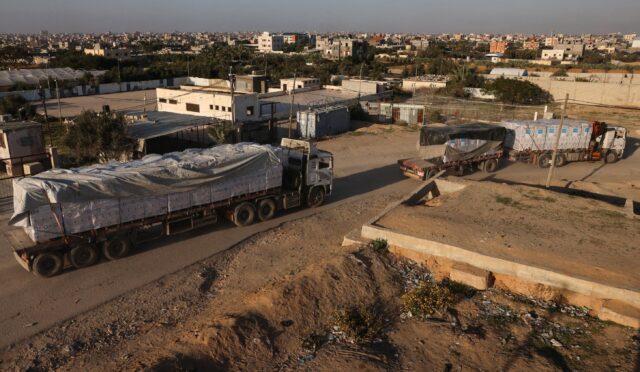Houthis Target Israel and US Warships
On Monday, Yemen’s Houthi rebels claimed responsibility for launching an attack on an Israeli military site and two US destroyers stationed in the Red Sea. This declaration came just after reports emerged from the Israeli military regarding the interception of a drone that had approached from the east, sparking concerns about escalating tensions in the region.
Houthi military spokesperson Yahya Saree announced in a video statement that they had successfully executed a military operation using a ‘Yaffa’ drone against an Israeli military site located in the occupied territory of Yaffa, known commonly as Tel Aviv. Further, Saree revealed that they targeted two American naval vessels utilizing a combination of cruise missiles and drones, intensifying the conflict in the area.
Israeli Response and Continuous Airstrikes
Earlier on the same day, the Israeli forces confirmed the interception of a drone that was heading towards its airspace, emphasizing their commitment to safeguarding national security. In a separate development, the Houthis’ Al-Masirah TV reported that five airstrikes carried out by the US had struck the Harib district in Yemen’s Marib province. These strikes reflect the ongoing military pressure from the US intended to neutralize Houthi threats in the region.
Yemen’s territories controlled by the Houthis have been facing near daily airstrikes attributed to the United States, especially since the US commenced its air campaign against the Houthis on March 15. This military operation aims to diminish threats directed at vessels navigating through essential maritime passages, illustrating the broader implications of the Houthi actions on international trade and security.
Impact of Regional Conflict on Maritime Traffic
Since the beginning of the Gaza war in October 2023, the Houthis have escalated their military operations, targeting shipping routes in the Red Sea and the Gulf of Aden. Their attacks on Israeli territory were briefly suspended during a ceasefire in January, only to resurface with renewed vigor following Israel’s blockade of Gaza in early March and the subsequent resumption of combat operations on March 18.
The renewed hostilities have created significant disruptions in the Red Sea, a vital artery for global shipping that generally handles about 12 percent of the world’s maritime traffic. Many shipping companies have been forced to reroute their vessels around the southern tip of Africa, significantly increasing transit times and costs due to the threats posed by Houthi attacks on commercial shipping.
Broader Implications of Houthi Actions
As the conflict unfolds, the Houthis have framed their military actions as acts of solidarity with the Palestinian people, particularly in light of the ongoing crisis in Gaza. This alignment has sparked concerns among international observers about the potential for further destabilization in the already volatile region.
The recent military operations by the Houthis and the retaliatory airstrikes from the US and Israel suggest a complex and escalating conflict, reflecting broader geopolitical dynamics. As the situation develops, the potential for significant disruptions to global shipping and regional security remains a pressing concern for both local and international stakeholders.







